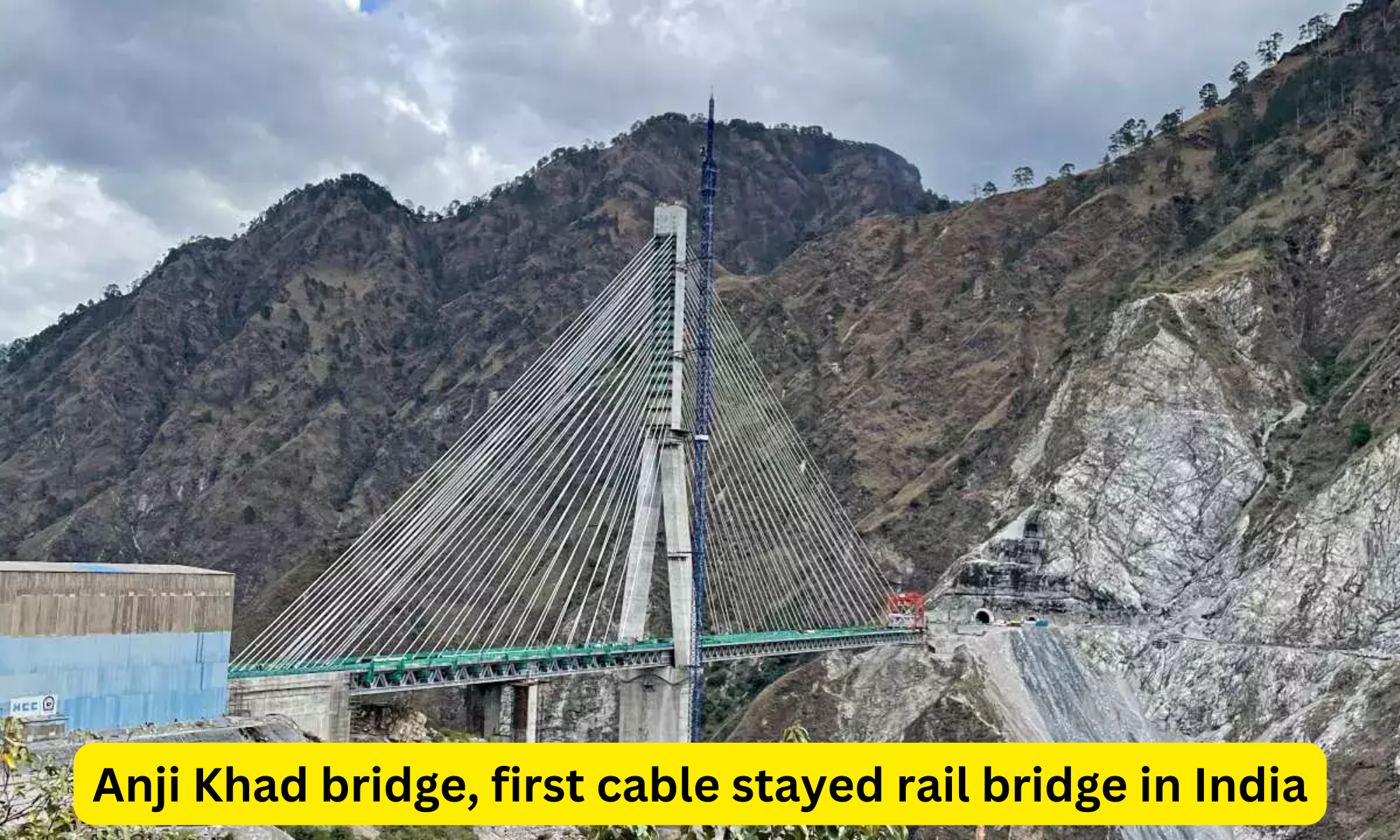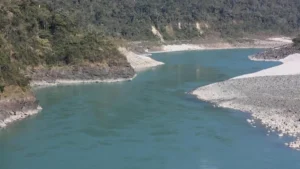Anji Khad bridge, first cable stayed rail bridge in India
India’s Union Railway Minister, Ashwini Vaishnaw, has shared a timelapse video showcasing the construction of the Anji Khad Bridge, the country’s first cable-stayed rail bridge. With a total of 96 cables spanning a length of 653km, the bridge is part of the challenging Udampur-Srinagar-Baramulla-Rail Link (USBRL) Project in the Reasi district of Jammu and Kashmir.
Buy Prime Test Series for all Banking, SSC, Insurance & other exams
Anji Khad bridge: Key Points
● The bridge connects Katra and Reasi and required detailed geological investigations from IIT Roorkee and IIT Delhi to navigate the complex and fragile terrain of the Himalayan mountain slopes.
● Due to space restrictions on the Katra end, a special hybrid foundation was developed to stabilize the foundation of the main span.
● On the Srinagar end, the majority of the Anji Khad Bridge works were completed, including the construction of the main pylon with a 40-meter-deep hybrid foundation, the central embankment, and the ancillary viaduct.
● To simplify construction and consider typical conditions, the 725.5-meter bridge was divided into four parts: the 120-meter-long ancillary viaduct on the Reasi side, a 38-meter-long approach bridge on the Katra end.
● The main cable-stayed bridge with a length of 473.25 meters and a central span of 290 meters, and the 94.25-meter-long central embankment located between the ancillary viaduct and the main bridge, which connects tunnels T2 and T3 on the Katra-Banihal Section of the Udhampur-Srinagar-Baramulla Rail Link project.
About Anji Khad Bridge:
● The Anji Khad Bridge is supported by a single main pylon standing at a height of 331 meters above the river bed, with a height of 193 meters from the top of the foundation.
● It has an asymmetrical design, with a total deck width of 15 meters, and is supported by 96 cables with lengths ranging from 82 meters to 295 meters.
● The main pylon utilized 40-meter-deep micropiles and a 20-meter hybrid well foundation.
● Designed to withstand heavy storms with strong winds of up to 213 km/h, the Anji Khad Bridge can accommodate a single railway line and a 3.75-meter-wide service road, with a 1.5-meter-wide footpath on each side of the deck.
● To ensure worker safety and increase efficiency while saving construction time, advanced equipment such as the DOKA Jump-Form Shuttering and Pump Concreting Systems have been utilized.
Prime Minister Inaugurates 91 FM Radio Transmitters, To Benefit Border, Aspirational Districts
Anji Khad Bridge: Other Highlights
● To monitor the bridge’s structural health during use, numerous sensors have been installed at various locations on the bridge.
● The Italian company ITALFERR was responsible for detailed design and construction supervision, while the UK company COWI was responsible for proof-checking, based on the Indy design, started by Photo by Eurocodes.
The site-specific earthquake parameter studies were conducted by the Department of Earthquake Engineering at the Indian Institute of Technology, Roorkee, to determine the seismo-tectonic framework for the region. The line is designed to operate at a speed of 100 km/h, which does not cause any issues for the train-structure interaction.
Also Read: Agriculture Minister Narendra Singh Tomar launches ‘Millets Experience Centre’ at Dilli Haat




 Which Glacier is the Source of the Brahm...
Which Glacier is the Source of the Brahm...
 What is the Full Form of EDP? Know Every...
What is the Full Form of EDP? Know Every...
 Which City of Germany is Known as the Gr...
Which City of Germany is Known as the Gr...







